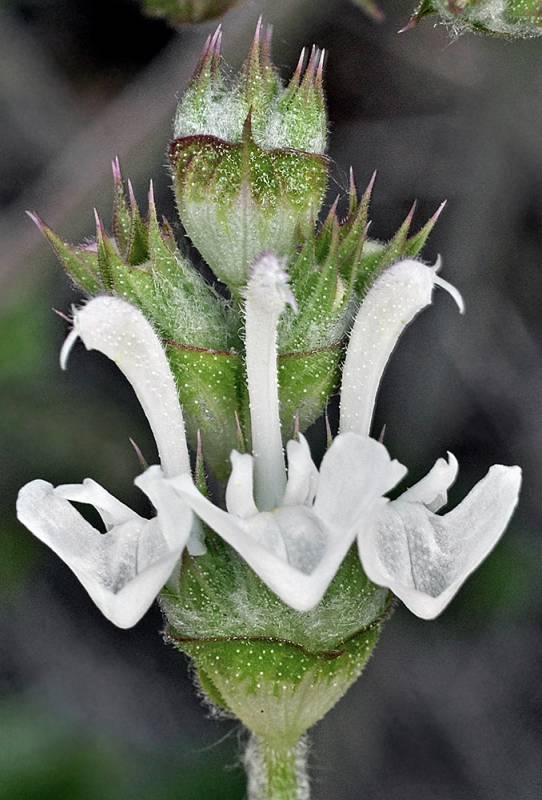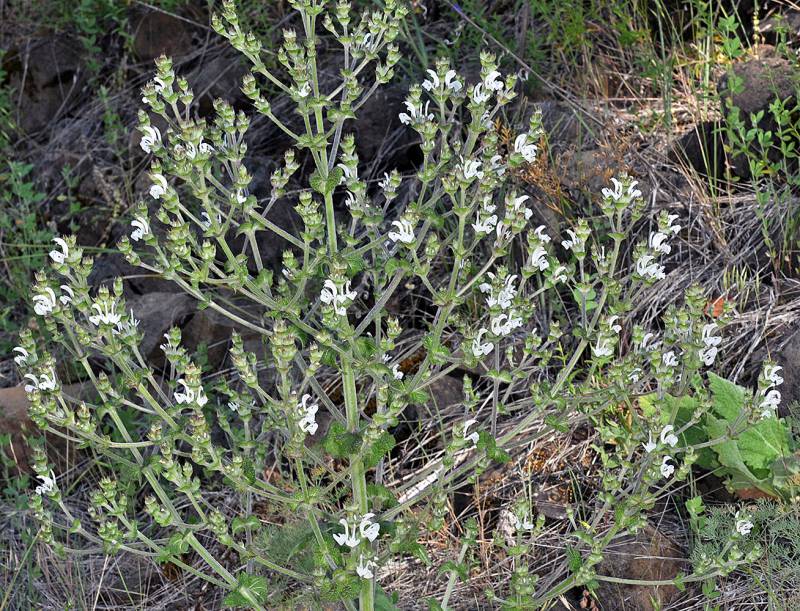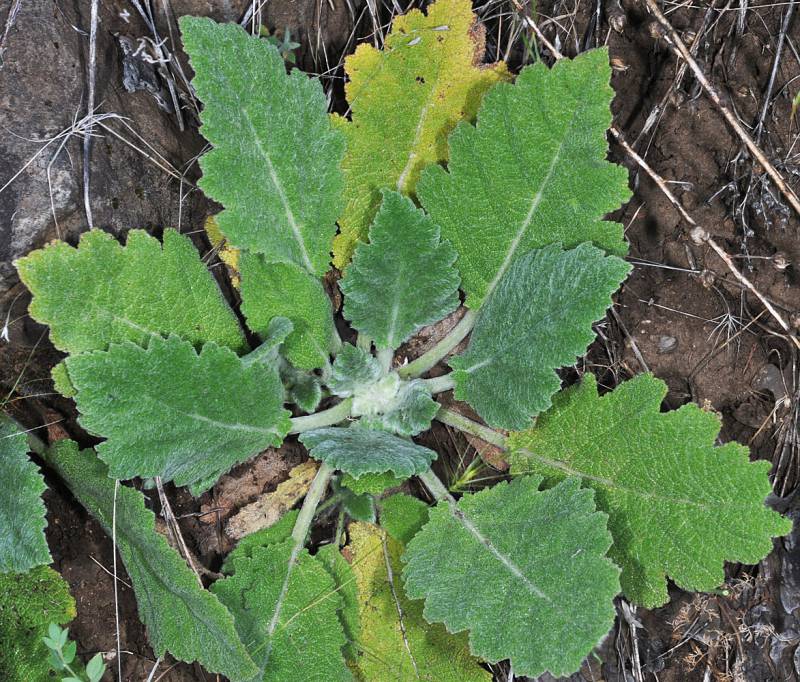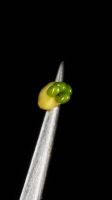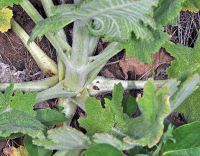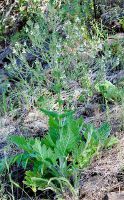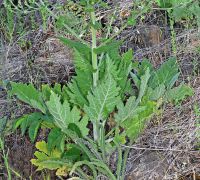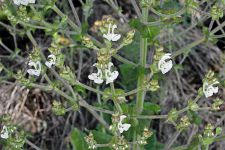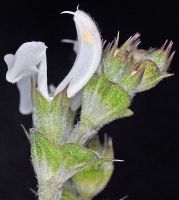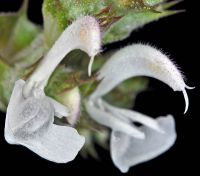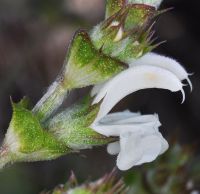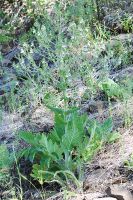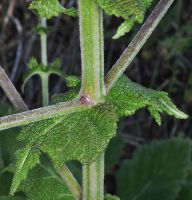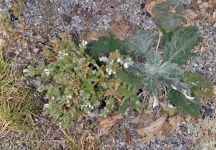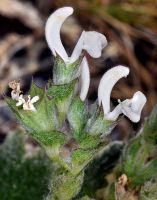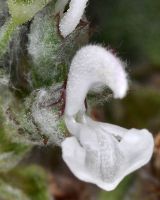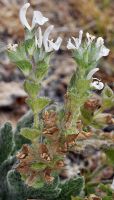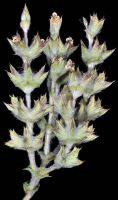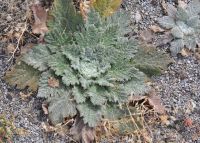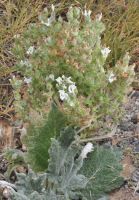Distribution: Occurring east of the Cascades crest in Washington; Washington to California, east to the Rocky Mountains.
Habitat: A weed of dry waste places and roadsides.
Flowers: June-July
Origin: Introduced from Europe
Growth Duration: Biennial
Conservation Status: Not of concern
Pollination: Bees, flies, hummingbirds
: Coarse biennial from a stout taproot, the stem 2-7 dm. tall, freely branched, woolly throughout when young, becoming partly glabrate.
Basal and lowermost cauline leaves petiolate, with large, ovate-oblong blades 6-25 cm. long, pinnately shallowly lobed, the lobes finely dentate; cauline leaves abruptly reduced to sessile, foliaceous bracts.
Inflorescence an open panicle, with verticles of flowers scattered along the branches, subtended by bracts 1-2 cm. long; calyx 1 cm. long, woolly; corolla pale yellow, 1.5-2.5 cm. long, the upper lip arched and hooded; stamens 2, shortly exerted.
Nutlets 4.
Publication: Sp. Pl. 1: 27. 1753.
PNW Herbaria: Specimen records of Salvia aethiopis in the Consortium of Pacific Northwest Herbaria database
WA Flora Checklist: Salvia aethiopis checklist entry
OregonFlora: Salvia aethiopis information
E-Flora BC: Salvia aethiopis atlas page
CalPhotos: Salvia aethiopis photos

